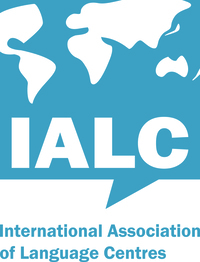Unlocking the power of written expression is a cornerstone of language education, yet teaching writing effectively requires thoughtful planning and strategic implementation. From defining goals to providing meaningful feedback, educators navigate various considerations to cultivate students’ writing skills. In this article, we delve into the intricacies of teaching the skill, exploring key aspects such as goal-setting, idea generation, language scaffolding, and feedback mechanisms. By illuminating the path to effective instruction, we empower educators to create engaging and impactful learning experiences that nurture students’ ability to communicate with clarity, coherence, and creativity. Let’s dive in!


To effectively teach writing skills, educators must carefully consider several key aspects, including planning, execution, and facilitation. By addressing these critical components, educators can create conducive learning environments that nurture students’ writing proficiency. Through tailored strategies and diverse methodologies, educators empower students to excel in written expression.
1. Defining Goals:
Determining the specific skills students need to develop, such as practicing different genres (e.g., postcards, emails, reports) or enhancing awareness of register and linking words.
2. Generating Ideas and Content:
Providing students with strategies to brainstorm ideas and generate content for their writing. This could involve activities such as mind mapping, freewriting, or group discussions.
3. Language and Model Texts:
Identifying the language students need to express their ideas effectively. Offer model texts as examples to demonstrate appropriate language use and structures.
4. Purpose and Audience:
Clearly defining the purpose of the written task and the intended audience. Authentic tasks with real-world contexts, such as formal letters of complaint or job applications, can motivate students and make the writing process more meaningful.
5. Feedback Mechanisms:
Establishing feedback mechanisms for students to receive input on their work. This feedback can come from the teacher, peers, or self-assessment tools. Teachers should actively engage in providing guidance and support during the drafting process, ensuring clarity and accuracy.
6. Stimulus and Preparation:
Offering ample stimulus and preparation time before students begin their task. Engage students in brainstorming sessions, outline creation, and language scaffolding activities to support their process. This preparation stage is crucial for preventing writer’s block and fostering meaningful output.
7. Variety in Tasks:
Designing tasks that reflect real-life scenarios, including text messages, social media posts, emails, and job applications. Creative writing tasks can also be incorporated to provide students with opportunities for self-expression and enjoyment.
8. Collaborative Work:
Encouraging collaborative writing experiences where students work in pairs or groups. Assigning roles such as scribe, editor, and idea generator can facilitate teamwork and enhance writing productivity, although it may lengthen the process. This links into our next point…
9. Incorporate Technology:
Integrating technology tools like blogging platforms or collaborative writing apps can make the creative process more engaging and interactive for students. By diversifying written activities and leveraging technology, educators can create dynamic and stimulating learning experiences that cater to the diverse needs and interests of their students.
In conclusion, effective teaching of writing involves careful planning, scaffolded support, and meaningful feedback. By addressing key aspects such as goal-setting, idea generation, language scaffolding, and feedback mechanisms, educators can create engaging and impactful writing instruction. Through authentic tasks, collaborative experiences, and varied activities, students can develop their written skills with confidence and proficiency. By providing ample stimulus and preparation, educators can prevent writer’s block and facilitate meaningful writing output.
Ultimately, the goal is to empower students to become competent and expressive writers who can effectively communicate their ideas in both academic and real-world contexts. With dedication and strategic implementation of these approaches, educators can unlock the full potential of writing in the language classroom, equipping students with a valuable skillset that extends beyond language proficiency to critical thinking, creativity, and self-expression.
Check out more information and ideas here!





